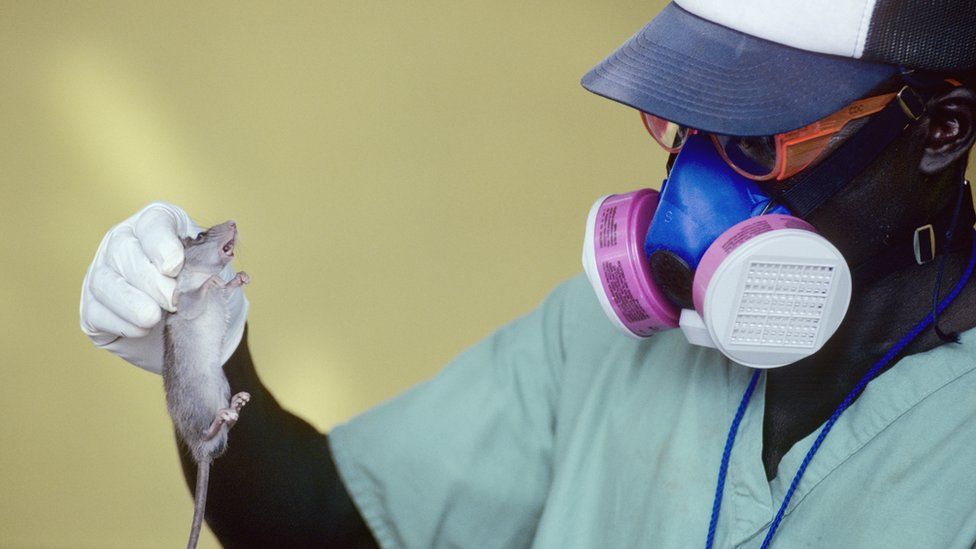Lassa fever
The large Lassa fever outbreak in Nigeria between January and May 2018 increased our awareness of the need to have well-detailed and easily accessible guidelines for response activities. Well be bringing you the.
Natalensis This is one of the most common rodents in equatorial Africa found across much of sub-Saharan.

. It is endemic in parts of West Africa including Sierra Leone Liberia Guinea and Nigeria. It has been known since the 1950s but the virus was not identified until 1969 when two. Severe symptoms such as haemorrhage respiratory distress repeated vomiting facial.
The incubation period of Lassa. Mild symptoms include slight fever a general feeling of weakness and headache. Lassa fever was first discovered in the village of Lassa in Nigeria in 1969 when two missionary nurses became ill with the virus.
Lassa fever symptoms are mild and undiagnosed in around 80 of cases. Lassa fever is known to be endemic in Benin where it was diagnosed for the first time in November 2014 Ghana diagnosed for the first time in October 2011 Guinea Liberia Mali diagnosed for the first time in February 2009 Sierra Leone and Nigeria but probably exists in other West African countries as well. Hospitalised patient in Bedfordshire succumbs to eye-bleeding virus after becoming third member of family to test positive following trip to West.
In 20 of infected individuals however. Lassa fever is a viral haemorrhagic fever endemic in West Africa It is predominantly asymptomatic or results in mild febrile symptoms about 80 of cases. A PERSON has died after contracting Lassa Fever the UK Health Security Agency has confirmed.
Neighboring countries are also at risk as the animal vector for Lassa virus the multimammate rat Mastomys natalensis is distributed throughout the region. LFV is zoonotic and is transmitted to humans via contact with materials contaminated with rodent urine or feces. Lassa fever is an acute viral haemorrhagic illness.
The Lassa virus is transmitted to humans via contact with food or household items contaminated with rodent urine or faeces. Lassa Fever Lassa fever virus LFV is endemic to West Africa where its natural hosts are rats of the genus Mastomys. England records its first ever Lassa fever death.
It is an acute febrile viral illness lasting one to four weeks and it occurs in West Africa and some areas beyond. The News Agency of Nigeria NAN reports that Lassa fever is a viral haemorrhagic fever transmitted by rats. It is a viral infection carried by.
Lassa fever is a viral infection carried by the multimammate rat Mastomys natalensis M. Lassa fever is an acute viral haemorrhagic illness of 2-21 days duration that occurs in West Africa. The overall case-fatality rate of Lassa Fever is 1.
Lassa fever warning. Lassa fever is an acute viral haemorrhagic illness caused by Lassa virus a member of the arenavirus family of viruses. For example Benin Ghana Guinea Liberia Mali Sierra Leone and Nigeria.
This was the third confirmed case. The first person in the UK has died of rare rat-borne virus Lassa fever in UK with two other cases being investigated. Symptoms of Lassa fever.
For the majority of Lassa fever virus infections approximately 80 symptoms are mild and are undiagnosed. Lassa fever is an illness caused by Lassa virus a single-stranded RNA hemorrhagic fever virus from the family Arenaviridae. What is Lassa fever.
In its Lassa fever. Although the Nigeria Centre for Disease Control NCDC had coordinated the development of these guidelines in 2017 the 2018 outbreak highlighted some lessons. People usually become infected with Lassa virus through exposure to food or household items contaminated with urine or faeces of infected rats.
Mild symptoms include slight fever general malaise and weakness and headache. Signs and symptoms of Lassa fever typically occur 1-3 weeks after the patient comes into contact with the virus. Lassa Fever CDC French Lassa fever is an animal-borne or zoonotic acute viral illness.
Lassa Fever Lassa Fever is an acute viral haemorrhagic illness that is endemic in some countries of West Africa. First person dies in UK - signs and symptoms. Lassa fever killed 40 people in Nigeria in the last four weeks of 2021 the countrys Centre for Disease Control said on Friday.
Lassa Fever Treatment. Lassa fever is an illness caused by the Lassa virus which usually infects people through exposure to food or household items that have been contaminated with the urine or faeces of infected rats.

Lassa Fever The Jenner Institute

Lassa Fever Virus Infographics Elements Royalty Free Vector

A Record High Lassa Fever Outbreak Strikes Nigeria The Atlantic





